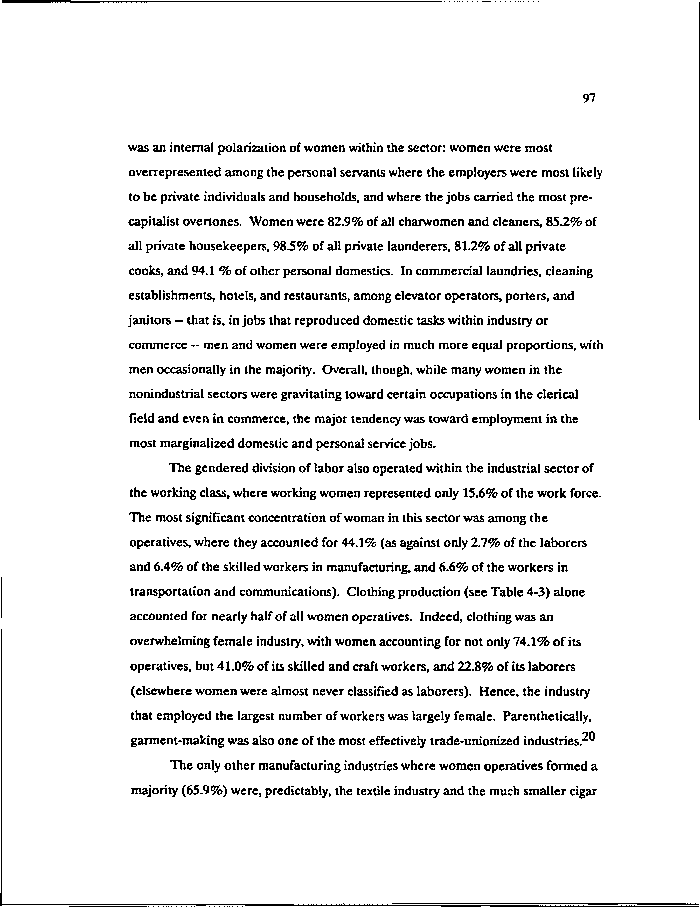|
97
was an internal polarization of women within the sector: women were most
overrepresented among the personal servants where the employers were most likely
to be private individuals and households, and where the jobs carried the most pre-
capitalist overtones. Women were 82.9% of all charwomen and cleaners, 85.2% of
all private housekeepers, 985% of all private launderers, 81.2% of all private
cooks, and 94.1 % of other personal domestics. In commercial laundries, cleaning
establishments, hotels, and restaurants, among elevator operators, porters, and
janitors — that is, in jobs that reproduced domestic tasks within industry or
commerce — men and women were employed in much more equal proportions, with
men occasionally in the majority. Overall, though, while many women in the
nonindustrial sectors were gravitating toward certain occupations in the clerical
field and even in commerce, the major tendency was toward employment in the
most marginalized domestic and personal service jobs.
The gendered division of labor also operated within the industrial sector of
the working class, where working women represented only 15.6% of the work force.
The most significant concentration of woman in this sector was among the
operatives, where they accounted for 44.1% (as against only 2.7% of the laborers
and 6.4% of the skilled workers in manufacturing, and 6.6% of the workers in
transportation and communications). Clothing production (see Table 4-3) alone
accounted for nearly half of all women operatives. Indeed, clothing was an
overwhelming female industry, with women accounting for not only 74.1% of its
operatives, but 41.0% of its skilled and craft workers, and 22.8% of its laborers
(elsewhere women were almost never classified as laborers). Hence, the industry
that employed the largest number of workers was largely female. Parenthetically,
garment-making was also one of the most effectively trade-unionized industries.^0
The only other manufacturing industries where women operatives formed a
majority (65.9%) were, predictably, the textile industry and the much smaller cigar
|

